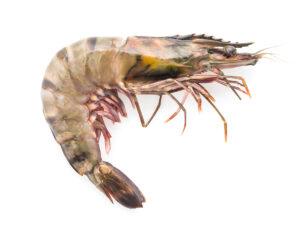SEATRACES PUBLICATION
Scope:
This document describes a procedure for the identification of single crustacean species in foodstuffs to the genus or species level based on Sanger sequencing.
The methodology has been tested to distinguish a variety of different commercially relevant and other crustacean species. The method is designed to work on fresh, frozen, and processed samples. It is not suitable for mixtures of samples containing DNA of different species. For some closely related species with relatively recent divergence, the method may only be able to determine the sample to genus level.
Principle of the method:
DNA is extracted using a suitable method for crustaceans. Two mitochondrial gene fragments, a 658 bp cytochrome c oxidase I (COI) (Lobo et al., 2013) and an approximately 520 bp 16S fragment (Palumbi et al., 1991) are amplified. The amplification of both fragments is necessary as in some cases, the simple use of only COI may not be sufficient as it may not work for all crustacean species and there may be a lack of sufficient COI data for some species. It has been noticed in sequence alignments that COI nucleotide sequences were ambiguous for some genera, e.g. Metapenaeus spp. and Heterocarpus spp., since either sequences were identical to other species or sequences of the same species differed substantially. From our laboratory experience, the COI primers may not work for some species such as Liocarcinus holsatus, L. depurator, Trachypenaeus spp., and Portunus pelagicus. Inconsistent amplification success was observed for Cancer pagurus, Squilla mantis and some Brachyura species.
The primers used for the amplification of these two sections are universal primers. In the further procedure, the PCR amplicons/products are sequenced in order to determine the nucleotide sequences. The evaluation of the determined sequences is carried out by homology search through comparing the query sequences with reference sequence entries in public databases, which enables a taxonomic determination with assignment of the sequence to a species or genus level on the basis of the degree of identity.

Results of the international ring trial for the genetic identification of crustacean species using cytochrome c oxidase I and 16S rRNA gene segments
Christian Brenn & Ute Schröeder
In this international ring trial within the Interreg Atlantic Area project SEATRACES, a method for the identification of commercially relevant crustacean species by Sanger sequencing of fragments of the genetic marker cytochrome-c-oxidase I and 16S rRNA was carried out for validation purposes.
Beforehand, a preliminary test was carried out within the SEATRACES consortium with seven laboratories, which showed positive results so that an international ring trial could be started. A selection of food control laboratories located within the respective countries were suggested by members of the SEATRACES consortium and subsequently contacted by the Max Rubner-Institut. In the end, twelve laboratories from five EU countries (1x Spain, 1x Portugal, 1x Ireland, 1x England, 8x Germany) took part in the ring trial.